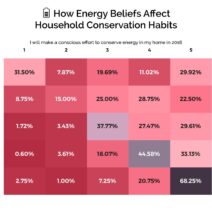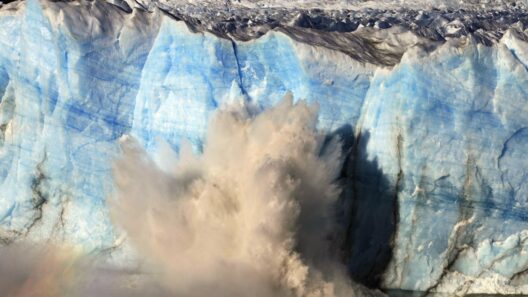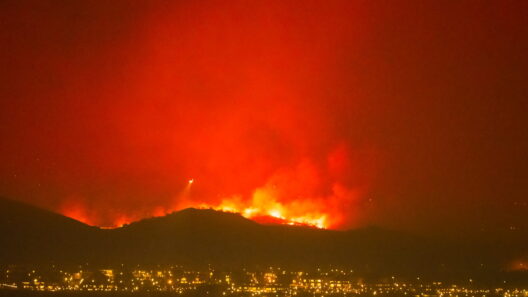The phenomenon of climate change has accelerated alarmingly over the past few decades, and at the heart of this escalating crisis lies an insidious culprit: increased carbon dioxide (CO2) emissions. Understanding the ramifications of this carbon overload is essential for grasping the urgency of our collective environmental responsibilities. When one contemplates the sheer volume of CO2 pumped into the atmosphere, it becomes evident that our relationship with carbon must undergo a profound transformation.
Carbon dioxide is a greenhouse gas, meaning it traps heat in the atmosphere, a process that is critically important for maintaining life as we know it. However, the balance of this natural greenhouse effect has been irrevocably altered by human activities, primarily through the combustion of fossil fuels, deforestation, and industrial processes. The sheer quantity of CO2 emitted over recent decades paints a concerning picture: atmospheric concentrations have increased from around 280 parts per million (ppm) before the industrial revolution to over 410 ppm today. This escalation is not merely a statistic; it is an omen of the shifting climate patterns and extreme weather events that we are already beginning to face.
The Earth is essentially a closed system, where the carbon cycle operates to regulate CO2 levels. Yet, anthropogenic activities have disrupted this equilibrium. Deforestation eradicates trees that serve as vital carbon sinks, leading to more CO2 in the atmosphere. Moreover, industrialization further accelerates this process, with power plants and automobiles contributing massively to emissions. As CO2 accumulates in the atmosphere, it acts like a blanket, ensconcing the Earth in warmth that perpetuates temperature increases. This phenomenon is often termed global warming, and its implications extend far beyond elevated temperatures.
Rising global temperatures have significant consequences for ecosystems worldwide. Habitats are being altered, animals are facing new challenges for survival, and biodiversity is threatened. Species that cannot adapt quickly enough to the changing climate are at risk of extinction. For instance, coral reefs, which host a symbiotic relationship with algae, experience bleaching when water temperatures rise or when CO2 levels increase. As these reefs deteriorate, so too does the myriad of marine life that depends on them.
The human impact is also profound and pervasive. A warmer climate exacerbates the frequency and severity of extreme weather events, from hurricanes to droughts. Coastal communities face the imminent threat of rising sea levels, with projections estimating significant portions of land could be submerged by 2050. Similarly, heatwaves become more intense and prolonged, leading to public health crises, agricultural failures, and economic instability. The intersectionality of climate change signifies that marginalized groups often bear the brunt of its consequences, amplifying inequality and strife globally.
In addressing the carbon overload, it is crucial to recognize not just the problems but also the possibilities. Transitioning to renewable sources of energy, such as solar and wind, can significantly reduce our reliance on fossil fuels. Innovations in technology, like carbon capture and storage, offer the potential of curtailing emissions from industrial sources. Additionally, reforestation and afforestation initiatives play a pivotal role in restoring the natural carbon balance by enhancing the planet’s capacity to absorb CO2.
Moreover, individual actions, though often perceived as minor, can collectively foster monumental change. Each choice—from the transportation we use to the food we consume—interacts with the broader system. Advocating for sustainable practices, such as reducing meat consumption, using energy-efficient appliances, or supporting local and organic agriculture, empowers individuals to contribute to a larger movement toward sustainability.
The urgency of mitigating climate change is echoed in global initiatives, such as the Paris Agreement, which aim to limit global warming to below 2°C above preindustrial levels. Participating in these frameworks is paramount for nations, uniting them in a concerted effort towards emission reductions. Awareness and education are fundamental to this pursuit; empowering citizens with knowledge regarding the impact of carbon overload can cultivate a collective responsible conscience.
In conclusion, the narrative surrounding carbon overload is not merely one of despair but also of hope and potential for transformative change. Understanding the intricacies of CO2 emissions and their far-reaching effects on our planet is paramount to fostering a proactive approach to combating climate change. Through a multifaceted strategy encompassing technological innovation, policy reform, individual action, and community engagement, society can strive towards maintaining a habitable planet for generations to come. The paradigm shift required is profound, but the urgency encapsulated in these challenges serves as both a wake-up call and an invitation to embrace sustainability. It is time to unlearn previous practices and reimagine a future where carbon is neither an adversary nor an overwhelming burden, but rather a manageable element in a harmonious ecosystem.








